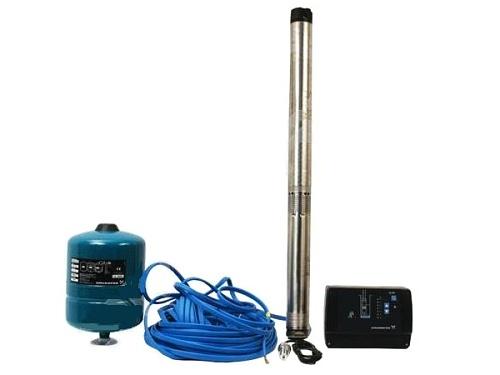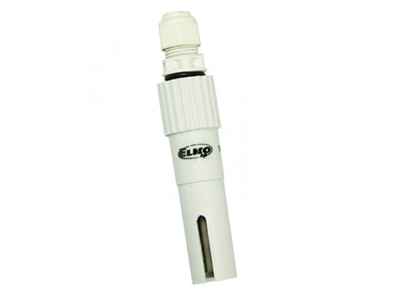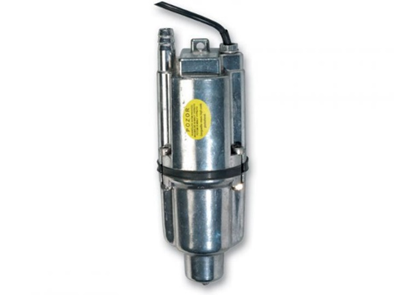A water well allows for the pumping of groundwater using highly efficient submersible pumps. To ensure the water is of high quality and health-safe, it's essential to maintain its cleanliness, even in cases where the well is only used for pumping utility water. Submersible pumps for wells are designed solely for pumping clean water, and excessive amounts of solid particles significantly shorten the lifespan of a deep well pump.
The water flowing into the well through perforation naturally brings impurities, which then settle in the well. Even the best-constructed well with the cleanest groundwater will gradually become clogged. Therefore, during well construction, one should not forget about a silt trap, which serves to capture and settle these impurities.
Excessive clogging of the well can also occur if we do not extract water regularly and due to errors in well construction. The quality of water and the amount of impurities from the soil are also significantly affected by the conditions in which the well is located. Clay soil or iron-rich subsoil result in faster clogging of the well and poorer water quality, hence the well requires more frequent cleaning.
Just like with cleaning a spring, it is always better not to delay well cleaning and focus on prevention. Overgrown bacteria are present in the water even before their presence affects the taste, odor, or color of the water, and the sooner the problem is addressed, the better the well can be cleaned. If you have doubts about water quality, it is good to have a water analysis done. Cleaning water from a well can be performed throughout the year, so there is no need to wait.

after constructing a well
if the well has not been used for a while (including during winterization of the well)
regularly every 4 to 7 years depending on water quality and well conditions
when water quality deteriorates
in case of problems with water pumping / pump (low pressure, well drying up, etc.)
after natural disasters, such as floods, inundations, etc.
before installing a submersible pump in the well (after exchanging or maintaining the pump)
Proper and regular care is essential for maintaining high water quality. Water from an uncleaned well contains excessive amounts of microorganisms and soil impurities, which can be harmful to health, even if it is not immediately apparent. Sediment that gradually accumulates at the bottom and walls of the well can then lead to damage to the submersible pump and the entire well.
If a well is not cleaned for a long time, the bacteria in the water multiply, leading to a decrease in water quality. The first signs of increased microorganisms manifest in worsening water taste, followed by cloudiness and odor in the water, and it becomes undrinkable.
If you notice that the water smells like eggs, it is either caused by the overgrowth of bacteria in the water and/or high iron and manganese content in the substrate. In both cases, however, it is necessary to clean and disinfect the well.
Submersible well pumps are designed to pump clean water with a defined content of solid particles that the pump can handle. If the water contains an excessive amount of sandy material and other abrasive substances, the pump gets damaged and can even be completely destroyed.
Impurities also accumulate on the walls of the well, which reduces its diameter and results in insufficient water around the pump. The water flow around the submersible pump is important for its cooling. If the pump is not adequately cooled, it can lead to overheating and thereby complete destruction of the pump. In the case of well narrowing, there is also a risk of mechanical damage to the submersible pump. In clogged wells, there can be a reduction in well yield: if no dry running protection is installed for the pump or the submersible pump does not have integrated dry run protection, it can lead to the destruction of the pump.

Sediment buildup restricts water inflow to the well, thus reducing the amount of water in the well.Excessive amount of solid particles in the pumped water additionally reduces the efficiency of the pump, and thus the pressure of the pumped water.
If a well is not cleaned over a long period, sediments gradually clog the well such that water cannot find its way inside the well. In such a case, the water source finds another path to flow and avoids your well. This leads to a complete loss of water in the well.
There are several ways to clean a well. Some require professional knowledge, experience, and equipment, but there is also a method that you can manage by yourself. However, you should never attempt to clean the well by yourself if the well water contains a higher amount of iron or manganese, or nitrates. In such cases, always leave the cleaning to the professionals. The same applies to deep wells, if there is a risk of the pump getting stuck, or if special techniques are required.
Well cleaning by this method involves cleaning with a stream of water. It is also suitable for heavily clogged wells and can deal with accumulated sediment, but there is a risk of damaging the well, so it is better to entrust water cleaning to professionals.
Well cleaning with air, known as airlift, is done by blowing air to the bottom of the well, where it stirs up the settled sediment, which is then sucked out of the well through another pipe. This method is suitable even for narrow wells and removes coarse impurities. It can only be used for sufficiently productive wells and the well construction must be of high quality, to avoid damage. Special equipment (injector, powerful compressor, etc.) is needed for the airlift application, therefore this method is not suitable for self-cleaning.

Cleaning a well with a pump is a method suitable for cleaning wells of all diameters, including deep wells. The method is ideal for DIY well cleaning and can effectively clean wells clogged with clay, rust, and coarse impurities. For cleaning a well with a pump, it's necessary to choose a pump that matches the well's conditions (well diameter, transport height, maximum submersion depth, etc.), and you must consider that this will lead to significant wear of the pump or its complete destruction.
An excellent pump for well cleaning is a vibrational water pump or a spindle pump. When choosing them, you can follow the guide for submersible pumps: how to choose a submersible pump for a well. Sludge pumps are not suitable for well cleaning due to their diameter. Never use submersible pumps for wells, as they are not designed for pumping contaminated water and you would destroy the pump.
This provides an ideal opportunity for maintenance of the pump and any necessary repairs, which contributes to a longer lifespan of the well pump.
With a large amount of sediment on the walls, the diameter of the well decreases, proceed as carefully as possible. The pump may get stuck when being pulled out of the well. A specialized company can help with this problem, but it's still possible that the pump will be damaged and/or cannot be removed from the well.
We recommend using a submersible vibratory well pump, which is characterized by high performance, high durability, and low acquisition costs. Ideally, all the water should be drained from the well.
When cleaning the well or well, it is important to ensure that the water source is as clean as possible and there is no recontamination of the water.
Disinfect the well with Save or a similar disinfectant in the correct ratio. Cleaning the well with Save is commonly used by professionals, but it is important to follow the manufacturer's instructions for its use.
When installing the submersible pump in the well, proceed according to the instructions for your pump.
After cleaning, it is necessary to let the well settle for at least 48 hours, so that fine sediment fractions, which naturally remain in the well after cleaning, settle to the bottom of the well. Before reusing water from the well, it is a good idea to perform a short-term water withdrawal outside the water supply network.